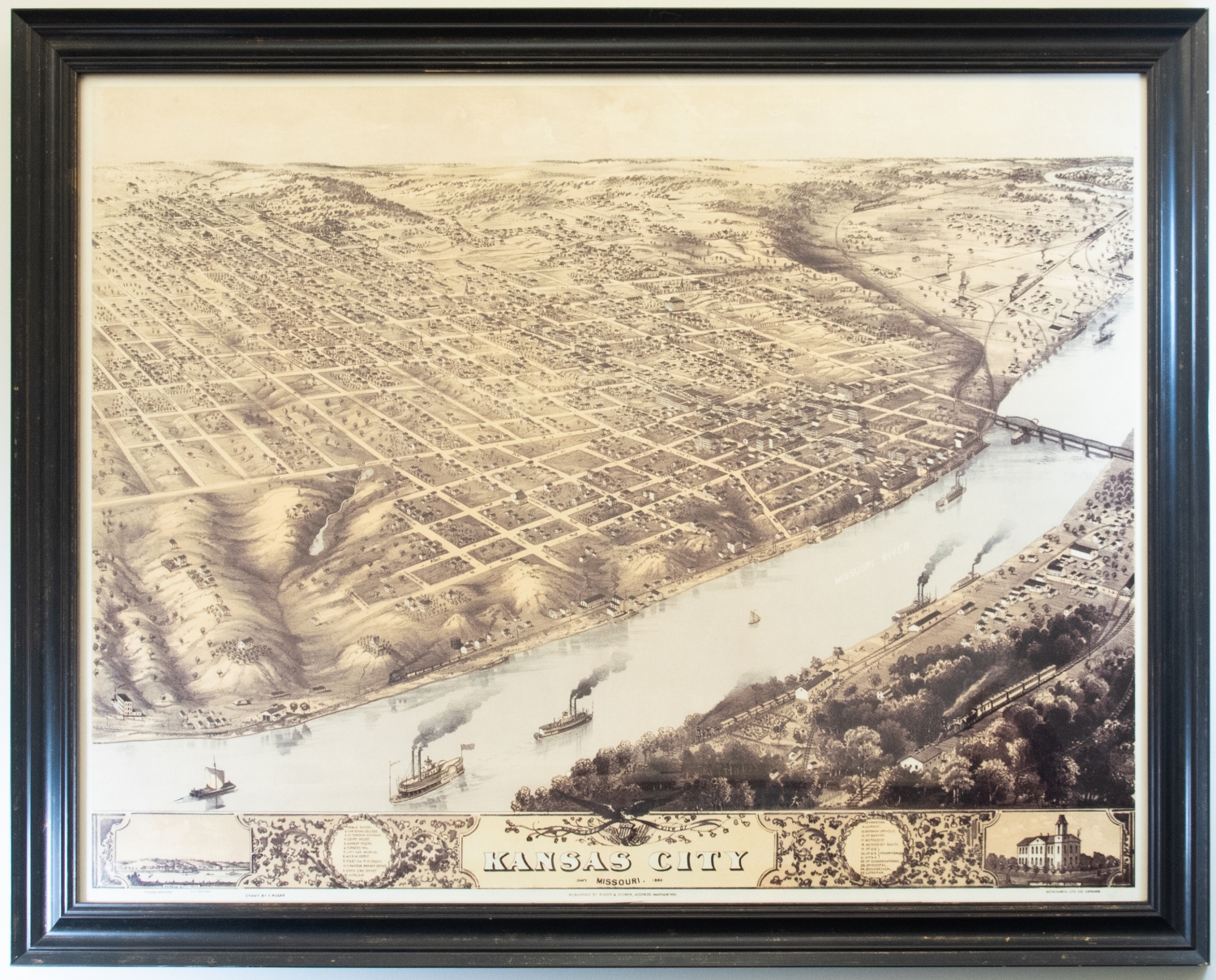Bird's Eye View of Kansas City
This panoramic bird's eye view map of Kansas City offers a multi-faceted interpretation of the area depicted. The vantage point characterizes the cartographic style popular for in the 19th century which abandoned scale to depict major developments and expansion possibilities. This map hybridizes a 3D topographical depiction of the area with 2D gridline streets. Many streets include their names and all are lined with meticulously rendered structures, the most notable of which are numbered in correspondence to a legend at the bottom of the map and include the Public School, Christian College, St. Theresa's Academy, and the Courthouse, among others. The settlement appears to emerge from the distant prairie land and becomes increasingly concentrated near the Missouri River along the bottom of the map, which is populated by steamboats and barges. Including barges on the river and trains on numerous railways such as the Fort Scott Rail Road acknowledge the growth of the city as a result of regional positioning to these major industrial amenities. Altogether, these elements offer a dynamic idea of the area but are also indicative of the early stages of cartographic practices at the time this map was drawn. For example, the technology that would allow the artist to see this view of the city did not yet exist, nor did GPS or other digital imaging systems. The artist would have had to directly survey the land and its modern developments and then use his imagination to visualize it as a whole.

